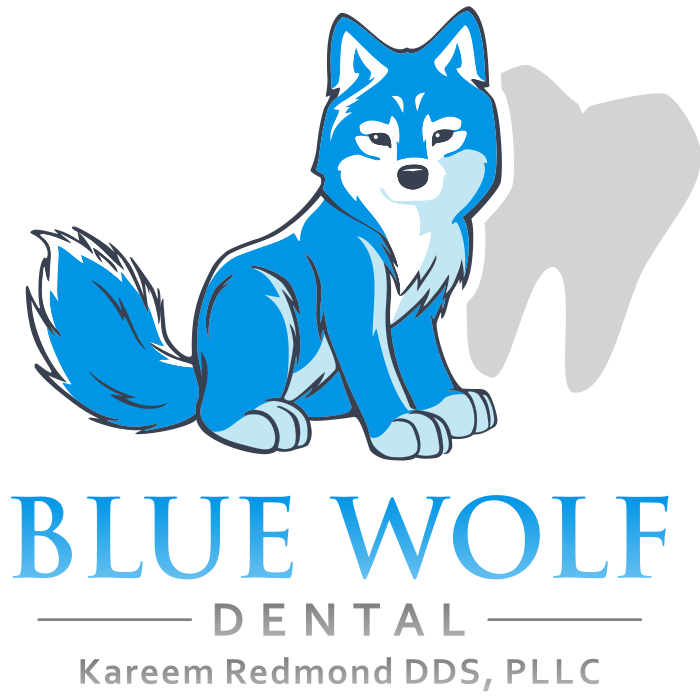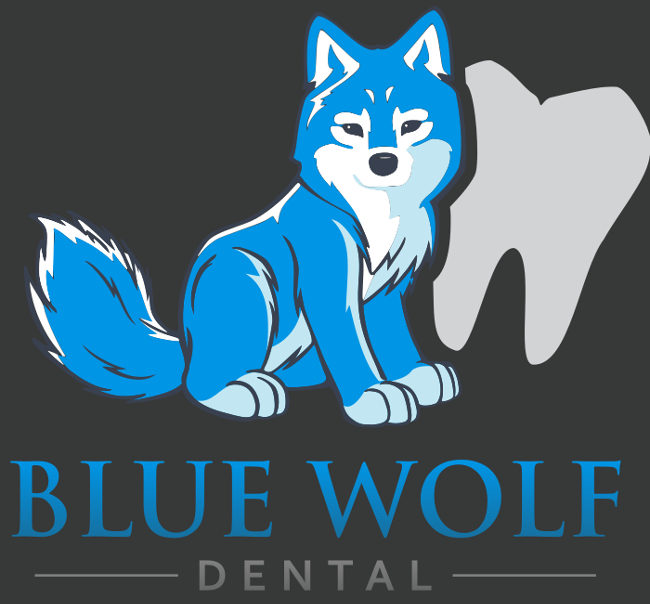Emergency Care
Unexpected dental emergencies happen, but they don’t have to keep you from living your life. We are here to help.
When dental emergencies happen, knowing what to do can mean the difference losing and saving a tooth. These emergencies can present in different forms. Whether it is severe spontaneous pain from a tooth, an achy jaw when you wake up in the morning, a dental abscess, or a tooth damaged from trauma the team at Blue Wolf Dental is here to help. We are able to provide several procedures that will help you with alleviating your pain and saving your tooth. We even provide support for patient outside of normal clinical hours. If for some reason your tooth can not be saved, we will discuss with you all of the available options to replace that missing tooth to restore your smile.

Dental Extractions
Our goal at Blue Wolf Dental is to preserve your natural teeth and keep them healthy for as long as possible. There are times when it is in your best interest (or your child) to have a tooth extracted (removed). This could be the case for a variety of reasons, including: damage or trauma to the tooth, extensive tooth decay, or even overcrowding.
Whatever the reason, tooth extraction is more often than not a very routine procedure. How straightforward this minor surgery is will depend several factors like your health history, the location in the mouth of the tooth to be extracted, and the position of the tooth roots. For example, a front tooth with a single straight root is easier to remove than a molar with multiple roots. This is especially true for wisdom teeth that are below the surface surrounded by gum tissue and bone. This is also referred to as an impacted tooth. We often see this with a wisdom tooth due to other teeth blocking its path preventing full eruption.
Still, tooth extraction is nothing to be feared when done by a gentle, experienced hand. Keep in mind that a tooth is not rigidly fixed in its surrounding bone. Teeth are actually attached to the bone via a network of fibers that form what is known as the periodontal ligament. By carefully manipulating the tooth, these fibers can be detached and the tooth freed without much trouble.
The first step in any dental extraction is a radiographic (x-ray) examination to assess the position of the tooth roots and the condition of the surrounding bone. This will allow any possible complications to be anticipated prior to the procedure. A thorough medical and drug history is taken, to ensure that you are healthy enough to undergo the procedure. Your options for anesthesia and sedation will be discussed.
With every dental extraction local anesthesia is provided to numb the teeth to be removed, surrounding bone, and gum tissues in the area. For some patients additional sedatives nitrous oxide (which is inhaled), oral sedatives (taken in pill form), or conscious sedation (IV sedation) will be used to manage any anxiety.
As the tooth is being removed, steps are taken to ensure the bone and gums that surround it are not damaged. Sometimes, in the process of removing a tooth, a small amount of lab processed bone grafting material is placed into the extraction socket to help preserve the bone volume there. This is particularly important when the placement of a dental implant is anticipated in the future.
Immediately after your tooth is extracted, the socket will be covered with sterile gauze; gentle pressure will be applied for 10-20 minutes to control any bleeding. Small sutures (stitches) might also be used for this purpose. It’s normal to experience some mild to moderate post-operative discomfort and/or swelling. Taking non-steroidal, anti-inflammatory drugs such as ibuprofen and/or aspirin the day of surgery should control most symptoms. Antibiotics may also be prescribed to ensure infection-free healing. Using ice packs on the outside of your jaw, and eating softer foods until you feel more comfortable can also be helpful. Within a few days, all should be back to normal.
Root Canal
Root canal treatment, also called endodontics, is a specialized procedure designed to treat problems of the soft pulp (nerve) tissue inside the tooth. While some mistakenly think of it as an unusually painful treatment, in most cases the procedure is no more uncomfortable than getting a filling. It is one of the most effective ways of relieving many kinds of tooth pain.
A root canal procedure becomes necessary when infection or inflammation develops in the pulp tissue of a tooth. The pulp tissue in a tooth consists of connective tissue, blood vessels, and nerve cells. This is why people feel intense pain when there is a problem with a tooth. Dental pain will often go away temporarily with time, but without treatment the infection won’t. If left untreated it can lead to a dental abscess and even contribute to systemic problems in other parts of the body. Another reason not to delay root canal treatment is to avoid the problems that commonly occur when teeth have been removed. These problems include unwanted tooth shifting or migration, which can lead to difficulties in chewing; the need for bridgework or dental implants, which may be costly and complicated; and even the eventual loss of bone structure from the area of the missing tooth.
If an examination shows that you do need root canal therapy there is no need to worry. Root canal therapy is one of the most routine and effective dental procedures which can often be accomplished in just one visit.
The root canal process generally begins the same way as a filling does, and with no greater discomfort. A local anesthetic is administered to numb the tooth and the surrounding area. For many patients, the worst part of the procedure is already over. Next, a small opening is made in the surface of the affected tooth to gain access to the pulp chamber and root canals. Tiny instruments are used to remove the dead and dying pulp tissue from inside these narrow canals. The chamber and empty canals are then cleaned, disinfected, and prepared to receive a filling of inert, biocompatible material. Finally, adhesive cement is used to seal the opening in the tooth, preventing future infection.
Following root canal treatment, your tooth may feel some sensitivity or tenderness for a few days. Over the counter pain relievers like ibuprofen are generally effective in relieving any discomfort, but in some cases prescription medications may also be needed. All of these symptoms should be temporary, but it may help to avoid biting hard on the affected tooth.
To further protect the tooth and restore it to full function, it’s usually necessary to have a crown placed on it. Restorations can take many forms, from traditional gold crowns to tooth replicas made of high tech tooth colored materials. In any case, you will have made an investment in preserving your dental health for years to come.
If you begin to feel constant, severe pain and pressure in your mouth or noticeable swelling in your gums then you need an evaluation and treatment right away. Some other commons signs of pulp tissue damage are sharp pain when you bite down on food and lingering pain after eating hot or cold foods. If you notice any of these symptoms, you need to have an examination as soon as possible.
Infection Management
A dental abscess is an oral bacterial infection that affects hundreds of thousands of people of all ages every year. A dental abscess can cause pain, tooth loss, swelling, breathing difficulty, and even systemic disease if not treated promptly. The signs of a dental abscess sometimes remain localized or can spread throughout the body. Most commonly, patients may exhibit some of the following symptoms
– Throbbing toothache pain
– Dental sensitivity to hot and cold
– Redness and swelling of the gums
– Pus at the gum line
– Swelling of the jaw
– Lymph node swelling and tenderness in the neck
– Foul-smelling drainage and bad breath
– Fever and facial tenderness
– A generalized feeling that they are sick
Treatment of dental abscess
If you show any of these symptoms you should seek treatment from a dentist right away. While you are waiting for your appointment, you can place a warm compress on the swollen jaw and/or take an over the counter dose of acetaminophen or ibuprofen to control any discomfort.
The doctor will examine your suspect tooth and take an x-ray to determine its condition. Upon confirmation of a dental abscess, you will advised on tooth extraction or root canal therapy to remove the diseased inner pulp in order to save the tooth. More involved swellings and infections may require drainage of the pus to facilitate recovery. Antibiotics often are part of the prescribed therapy to ensure infection does not spread to other teeth, surrounding bone, or to the rest of the body.
Can dental abscesses be prevented?
All of us have seen drawings of people with compresses wrapped around their throbbing heads. This does not have to happen to you! The following measures can be taken to avoid dental and periodontal abscesses:
– Get semi-annual cleanings and dental check-ups to keep ahead of gum disease and decay.
– Brush twice a day and floss daily to remove plaque.
– Call the office at the first sign of a toothache. Early intervention prevents infection.
– Protect your mouth from lacerations and tooth fractures by wearing a sports mouthguard.
– Drink plenty of water daily to increase saliva and wash tooth and gum surfaces.
– Eat a nutritious, low-carb diet. Fibrous fruits and veggies and calcium-rich dairy products strengthen teeth.
– If something gets wedged between a tooth and gum tissue, try dislodging it with dental floss. If you are unsuccessful, contact your dentist
Be aware of your oral health
Be sensitive to changes that are occurring in your mouth. If you believe you have a problem with a tooth, contact Blue Wolf Dental for an appointment. When it comes to your oral health, always err on the side of caution. Here at Blue Wolf Dental we urge immediate treatment of any dental abscess.
Dental Trauma
Coming soon…
Bridges
Missing teeth can cause a noticeable change in in the way we speak and eat. Fortunately we now have many options to restore your smile. Bridges or “fixed partial dentures” are a form of tooth replacement used where a tooth or several teeth are missing. Unlike a removable partial dentures, which can be taken out to clean, a fixed bridge is permanently cemented in and can only be removed by a dentist. They replace missing teeth by attaching to abutments, which are either natural teeth or dental. Fixed bridges are made by placing crowns on the abutments and fusing the crowns to the tooth replacement which is called a pontic. This bridge is then bonded onto the abutments.
The procedure for a bridge usually takes two appointments to complete. At the first appointment the abutment teeth on either side of the gap are prepared by removing a portion of the enamel and dentin. Accurate impressions of the prepared teeth are then taken and sent to a dental laboratory where the bridge will be constructed. A temporary bridge will be made and temporarily cemented while your permanent bridge is being fabricated. It usually takes about three weeks for the bridge to be fabricated by the dental lab. At your second visit, the bridge is adjusted for fit and cemented in place.
Though bridges can be a great restorative option, they are not indicated for all patients. Bridges require support on both sides of the area missing teeth either by other teeth or implants in order to be placed. Also, in situations where the two adjacent teeth are healthy and require no restorations an implant is a much more conservative treatment alternative. If you are interested in replacing a missing tooth, let the team at Blue Wolf Dental review what treatment options may be best for you.

